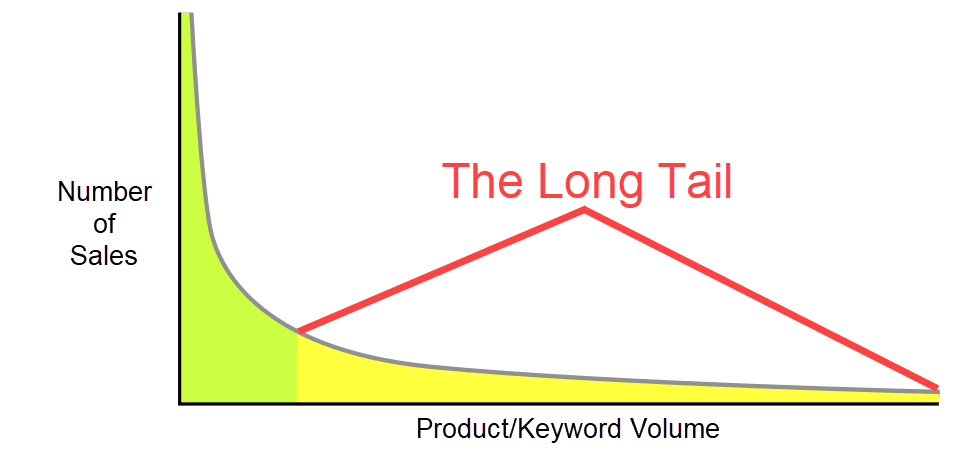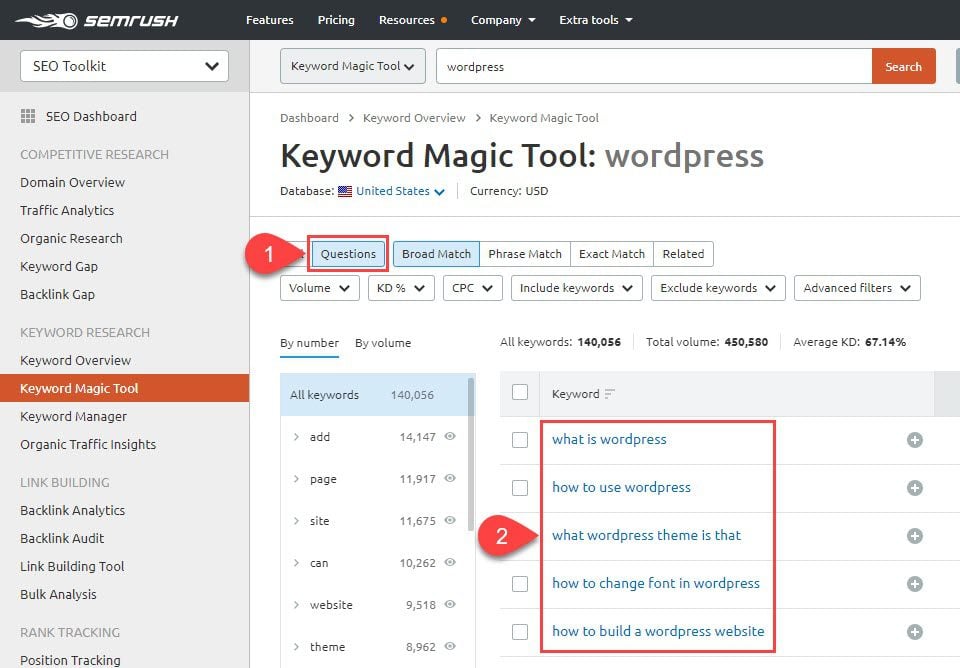Use any SEO plugin or service, and you will always be looking at “keywords” or “key phrases.” In general, these are 1-3 words that you want to rank for in search engines. When someone types in a query like workout, you want your fitness site to show up, for example. But that’s just basic, single-keyword SEO. However, you can drum up even more traffic, more engagement, and more conversions by including long-tail keywords in your post or pages, too, that will attract secondary and tertiary audiences.
Subscribe To Our Youtube Channel
What are Long-Tail Keywords?
The term long-tail comes from Chris Anderson’s book The Long Tail. In it, he discusses the potential for increased revenue by focusing on selling a smaller number of a wider variety of products versus a large quantity of only a few items. This concept has been adopted by the SEO industry, meaning that sites can potentially get more traffic and conversions by focusing on the long tail of the graph.

In SEO, many times the long-tail keywords are far more specific than the primary keyphrase. For example, if your primary keyword is workout, a long-tail keyword might be 30-minute workout or maybe how to workout with kettlebells. Those will get fewer searches individually, but they have the potential to reach a wider audience that results in higher, overall numbers.
The metaphor that gets thrown around a lot is the Chinese dragon. The primary keyword for your blog or your article is the head of the dragon. The other keywords that you target with that post are (wait for it) the long tail of the dragon. While most people will be looking at the head (searches that get the most volume), other people will find the tail where they focus their attention.
The Benefits of Long-Tail Keywords
These keywords work as companions to your original, more generic keyphrase. Your site itself has a particular keyword or keyphrase that you want to rank for. Whether that’s fitness or WordPress development or something else that brings in your main audience, long-tail keywords are what bring in more diverse, but lower-volume traffic.
Because long-tail keywords are more specific, the volume tends to be lower, which is a good thing. While it brings in less traffic for that keyword alone, the competition for that keyword is proportionately lighter, too. Which means you can target ad campaigns and marketing for a much lower cost than your primary keyword.
In many cases, long-tail keywords are designed to attract niche customers, like 1970s comic books instead of comic books or graphic novels. These sorts of searches may not be what your entire site is about, but because it’s related to the overall subject matter, those niche users will most likely explore the rest of your site to find more content similar to what brought them there.
Or the long-tails may attract customers who know precisely what they want and are searching for the right place to click Buy Now: such as Elegant Themes Divi lifetime membership. If someone were to use that specific search phrase, the conversion is almost certain versus someone who simply searches Divi.
Using Long-Tail Keywords As Companions
The real trick to optimizing your SEO for long-tails, though, is that they ideally come organically as a companion to the post’s topic. Think about writing a post where you want to rank for the keyword WordPress hosting. The outline of the post might include an overview of the kinds of hosting available, a quick list of the top companies, and then a couple of in-depth looks at the main choices you want to highlight. That final bit, the in-depth looks, would be where you look for long-tail keywords.
Let’s say that you rank #34 for WordPress hosting in Google. It’s a very competitive keyword. However, you might rank higher for SiteGround WordPress hosting or Flywheel WordPress hosting. And if you discuss specifics of platforms, you could optimize for that. Maybe something like Divi hosting with Flywheel gets you more traffic than WordPress hosting because folks are looking for it and you discuss it so you stand out above the crowd.
Cornerstone Content
This ties into what is called keystone or cornerstone content. For example, we have a post titled The Ultimate Guide to HTTP Error Codes. In it, we discuss the major HTTP error codes, what they are, and how to fix them. But because of the nature of the topic, we couldn’t go into specific details on the solutions for each one. So we linked out to posts like What is the HTTP 429 Error and How to Fix It or HTTP 508 Error Codes on Your WordPress Website. These target long-tail keywords for the ultimate guide, our cornerstone post. Additionally, all those long-tail articles then link back to the overall guide, which directs search engines and users back to it.
Ranking for Voice Search
Another way to use long-tail keywords in your content is to write in such a way that you answer someone’s question with your content. More and more, users searches through a virtual assistant like Alexa, Siri, or Google Home. You can use long-tail keywords in the forms of questions and answers throughout your content to optimize for these searches.
You can use services like SEMRush to even find related questions based on your primary keyword that you can either write into an existing article as an update or as one of the long-tail keywords that supplements your entire site’s overall subject.

Because these sorts of questions give a very specific search intent, you can mold your content to answer them directly. You don’t have the question How can I change the font on WordPress in your post or even a whole post about it. You could have a section heading in H2 that reads How to Change the Font in WordPress? And that section would be an extension of the main topic (maybe top fonts of the year, why I chose these fonts for my site, etc.). Google would see it, read it semantically, and rank it based on your information, potentially even giving you the featured snippet because you answered a particular question users ask frequently.
Wrapping Up
Long-tail keywords are one of the most valuable tools in your SEO arsenal. While you might think that the high-volume keywords are where you should focus, it’s often the specific, niche keywords that convert better. So as you look back at the content on your site, look for ways to answer specific questions for your readers and what can grab people’s attention who are already close to buying your kind of product. You may be surprised how much traffic a lower-volume keyword can generate.
What is your strategy with long-tail keywords?
Article featured image by konggraphics / shutterstock.com









Leave A Reply